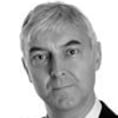The Scottish independence poll was a "quite the most remarkable thing" that many, many people had ever been involved in, the Scottish National Party MP for Dundee, Stewart Hosie, said yesterday.
Dozens of volunteers turned up at the Yes Dundee headquarters at 6am yesterday to collect material for leafleting the city, and a further 400 were scheduled to visit the centre over the course of the day for particular duties. There was a constant stream of cars and buses to and from the building, on St Andrew Street in the city centre, transporting volunteers and also heading out to ferry voters to and from polling stations.
Throughout the city there were signs of support for independence, with cars flying the saltire and people wearing blue Yes T-shirts and rain jackets. “End Tory rule forever,” read one poster. Support for the retention of the union was much less visible.
Common cause
Dundee has been dubbed the Yes capital of
Scotland
because of the level of support for independence in the city and it is one of the constituencies where the independence vote has to be strong if is to counter opposition to the Yes campaign elsewhere. There are more than 100,000 registered voters and a turnout of more than 80 per cent was expected.
Hosie said the campaign was unlike anything he had ever experienced. “People from all parties and none coming together with common cause, this has been invigorating for the whole of Scottish politics and quite the most remarkable thing many, many people have ever been involved in.”
The No or Better Together campaign offices in an old commercial building called Dunsinane House in an industrial estate some way outside the city centre, seemed more subdued, though workers there said they were extremely busy running a very focused campaign on behalf of the “silent majority”.
At polling stations visited by The Irish Times there was always at least one campaigner urging people to vote Yes, while activists urging people to vote No were more of a rarity.
Both views on independence were represented among the voters who spoke to this reporter when they were coming out of the polling station at the Glebelands Primary School, on Baffin Street.
Donna Harper said she had voted Yes. “It’s not a nationalist thing, but I think we can govern our own country better than anyone else can. I think we are the best people to look after our own affairs.”
Willie Clark said he voted Yes because he believed Scotland should be a nation state and that it was "the right thing to do".
Amanda Lowe voted No because she believed that it was better for Scotland to stay with the rest of the UK, for reasons to do with economics and national security. “There were just too many unanswered questions to vote Yes,” she said.
Labour Party member and No campaigner Andrew Cahill was canvassing voters as they made their way into the polling station. He said it was his experience that the voters coming there were split 50-50 on the referendum choice.
Unanswered questions
“We’re finding it is very much a split city. It is not a Yes city. There is a choice there. There’s a silent majority, concerned about the
NHS
, their pensions, schools, hospitals, oil. There are too many unanswered questions. People don’t want to vote for uncertainty.”
He said voters did not welcome people “shouting them down” and telling them that “we can do this, and we can do that, when they haven’t actually given the answers as to how [an independent Scotland] could do it.”
Officials at polling stations said business had been brisk and there were queues of voters at some locations from early in the morning.



















